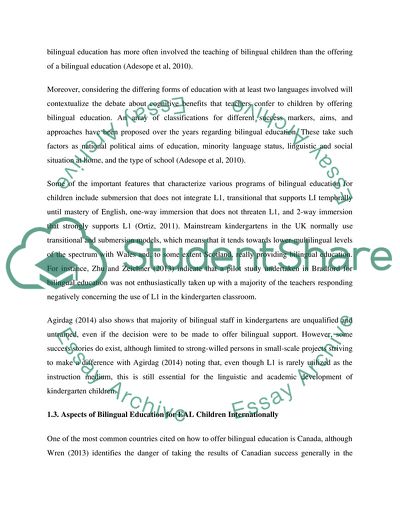Cite this document
(Aspects of Bilingual Education for EAL Children Internationally Literature review Example | Topics and Well Written Essays - 3750 words, n.d.)
Aspects of Bilingual Education for EAL Children Internationally Literature review Example | Topics and Well Written Essays - 3750 words. https://studentshare.org/education/1835957-the-challenges-that-facing-kindergartens-teachers-to-deal-with-children-whose-english-as-an-additonal-language
Aspects of Bilingual Education for EAL Children Internationally Literature review Example | Topics and Well Written Essays - 3750 words. https://studentshare.org/education/1835957-the-challenges-that-facing-kindergartens-teachers-to-deal-with-children-whose-english-as-an-additonal-language
(Aspects of Bilingual Education for EAL Children Internationally Literature Review Example | Topics and Well Written Essays - 3750 Words)
Aspects of Bilingual Education for EAL Children Internationally Literature Review Example | Topics and Well Written Essays - 3750 Words. https://studentshare.org/education/1835957-the-challenges-that-facing-kindergartens-teachers-to-deal-with-children-whose-english-as-an-additonal-language.
Aspects of Bilingual Education for EAL Children Internationally Literature Review Example | Topics and Well Written Essays - 3750 Words. https://studentshare.org/education/1835957-the-challenges-that-facing-kindergartens-teachers-to-deal-with-children-whose-english-as-an-additonal-language.
“Aspects of Bilingual Education for EAL Children Internationally Literature Review Example | Topics and Well Written Essays - 3750 Words”. https://studentshare.org/education/1835957-the-challenges-that-facing-kindergartens-teachers-to-deal-with-children-whose-english-as-an-additonal-language.


